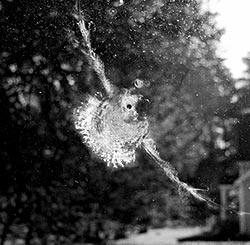Unfortunately, several hundred million birds are killed each year as a result of collisions with windows.
Birds of all shapes and sizes travel at speeds high enough that a window collision almost always proves fatal. Birds that survive immediate impact are stunned and often fall prey to predators, like domestic cats, soon after a collision.
How to Safeguard Your Windows For Birds

Determine which windows pose a risk first, such as large picture windows, windows paired at an angle, or windows with feeders outside. Step outside and observe your windows through the eyes of a bird. The birds will see what you see if you can see branches or the sky reflected in or visible through the glass. It is no longer believed that previous guidelines regarding safe separations for feeders outside of windows are relevant, according to Sheppard. “Make your windows bird-friendly and don’t worry about how far away they are if you have windows near a bird feeder.” ”.
Why Birds Collide With Windows

Daytime and nighttime window collisions are the two primary categories. Birds collide with windows during the daytime because they can see vegetation or potted plants on the other side of the glass, or they can see reflections of the vegetation. Most songbirds and other nocturnal migrants crash at night when they fly into illuminated windows.
For reasons not entirely understood, lights divert nocturnal migrants from their original path, especially in low-ceiling or foggy conditions. In the lighted area, they mill about, sometimes colliding with one another or the lighted structure. As a subsequent hazard, migrants drawn off course by urban lighting may roost safely nearby, only to become vulnerable to daytime reflections in windows the following day. The BirdCast project and the Fatal Light Awareness Program have more about this problem.
One more reason is that birds occasionally target their reflections in windows. When territoriality is high in the spring, this occurs most frequently. Despite the fact that it may irritate the homeowner, the bird’s survival is rarely in danger. The majority of the solutions listed below for window strikes also address the issue of birds attacking reflections.
Observe Bird Collision Patterns
Window strikes frequently follow a pattern. Occasionally, and during specific times of the day, you might discover dead or injured birds under the same window. Place yourself right in front of the glass to observe what birds are seeing in the reflection. To see the window reflection in various lighting conditions, repeat this at different times of the day.
Keep an eye on bird feeders and birdbaths to determine if birds are flying from those areas and hitting windows. If so, the majority of researchers concur that moving the feeder closer to the window is a good idea. Rarely do birds flying from a feeder that is only two or three feet from the glass reach a fast enough speed to cause harm to themselves.
FAQ
Is it common for birds to fly into windows?
How often do birds survive hitting windows?
What time of year do birds fly into windows?
Why does a bird fly into the window every morning?